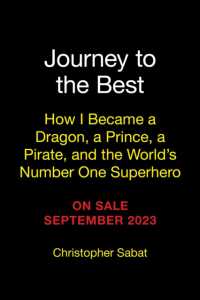- ホーム
- > 洋書
- > 英文書
- > Psychology
Full Description
The pandemic, and our response to it, have shown how unpredictable, irrational, illogical, suddenly changing, and muddled human interactions can be in a time of crisis. How can we make sense of such confusing and baffling behavior?
This book reveals how chaos and nonlinear dynamics can bring new understanding to everyday topics in social sciences. It brings together chapters from leaders at the intersection of psychology and chaos and complexity theories. Conceptual and user-friendly, it is built around six themes: 1) Seeing nonlinearity, 2) Finding patterns, 3) using Simple models, 4) Intervening nonlinearly, and 6) teaching a new Worldview. It takes no specialized study-although there is more sophisticated material and optional math for those wishing it. The techie will, in addition, find concepts and diagrams to ponder.
The volume is engaging, at times startling-whether about the weather, Internet, organizations, family dynamics, health, evolution, or falling in love. It reveals how many social, personal, clinical, research, and life phenomena become understandable and can be modelled in the light of Nonlinear Dynamical Systems (NDS) theory. It even offers a broadening worldview, happening already in other sciences, toward a more dynamic, interconnected, and evolving picture, including process-oriented appreciation of one's own experience.
The book offers those in the field of psychology and the social sciences a stunning new perspective on human behaviour.
Contents
Contributors
Foreword (David Schuldberg) Acknowledgements
Introduction: David Schuldberg, Ruth Richards, Shan Guisinger: Six Ways to See and Work in a Nonlinear Dynamical Systems (NDS) World
SECTION I: Through a Nonlinear Lens
Introduction to Section I
1 David Schuldberg Nonlinear Dynamics: The Creative Missing Link in Wellness
2 Riane Eisler: Psycho-Social Attractors and Human Well-being: Nonlinearity in Cultural Evolution
3 Ruth Richards: Creativity, Chaos, Complexity, and Healthy Change
4 Shan Guisinger: Human Nature and Chaos
5 Stephen J. Guastello: Chaos as a Construct in Psychology: A History
6 Allan Combs: Emergence of States of Consciousness: Exploring Self-Organization
7 Frederick David Abraham: In the Garden of Chaos: Visualizing Dynamics
8 A CONVERSATION with Stanley Krippner: Changes in Psychology, Chaos Theory, and Complexity Theory in the Last 25 Years
Ruth Richards: Intermezzo. Look again: Five Issues Reframed Using Chaos and Complexity Theory
SECTION II: Shifts and Deeper Visions
Introduction to Section II
9 Tobi Zausner: Embracing the Infinite: Creativity and the Nonlinear Self
10 David Loye: Darwin and the Human Future
11 Terry Marks-Tarlow: Intuition in a Nonlinear World
12 Shan Guisinger: Evolution, Chaos Theory, Narrative, and Dreaming: The Case of Anorexia Nervosa
13 Keith Owen, A. Steven Dietz, and Ralph Gohring: Strategies for Creating the Learning Organization
14 Seana Moran: Life Purpose and Intentionally Being Creative: A Cultural-Ecological Feedback-Loop Perspective
15 Frederick David Abraham: In the Garden of Chaos: Visualizing Networks
16 A CONVERSATION with Melanie Mitchell: The Second Nonlinear Revolution. Getting the Word Out: Education for a New Era (and sign up for an SFI MOOC)
David Schuldberg, Ruth Richards, and Shan Guisinger: Integration and Conclusions. Nonlinear Dynamics in Psychology: Six Themes, Four Ps, and the Third Culture
Author Index
Subject Index








